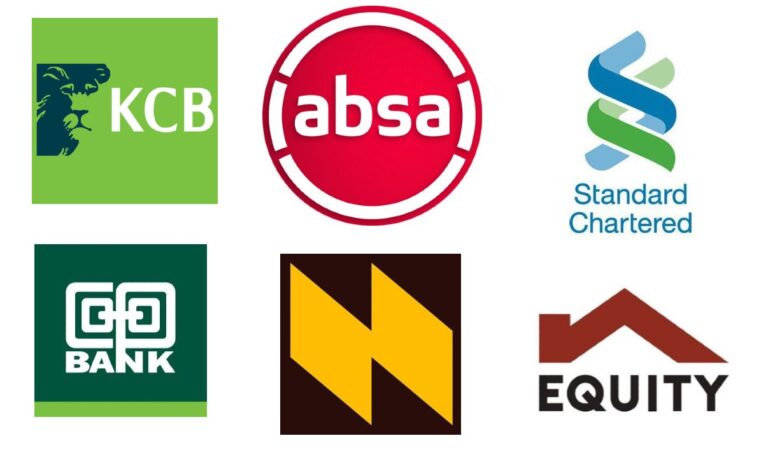What Is a Checking Account?
From time to time, individuals and businesses need to access their money for daily use. A checking account offers a secure place to deposit your money and access it any time you want. This account allows numerous withdrawals and unlimited deposits, which ensures that users always have access to their funds. This article gives a detailed review of what a checking account is and how it works.
What is a Checking Account?
A checking account is a type of bank account that allows individuals or businesses to deposit money and make withdrawals as needed. This account is also known as a demand deposit account, due to the right it provides customers to have unlimited access to their funds. Checking accounts are one of the most popular types of accounts used by people, since they provide convenient access to their money at any time and from any location.
Checking accounts can be individual accounts, business or commercial accounts, joint accounts or student accounts. Commercial checking accounts are opened, owned, and run by businesses. The business officers and managers are usually the signatories of commercial checking accounts as authorized by the business’ governing documents.
Several banks also offer special free checking accounts for students which remain free for until they graduate. Joint accounts on the other hand are operated by two or more individuals and are commonly used by couples.
How Does a Checking Account Work
When you open a checking account with a financial institution, such as a bank or credit union, you will be provided with multiple options for how you can use your funds. You may opt for online banking services like direct deposit and mobile banking, which allow you to transfer funds easily from one account to another. You may also use ATMs and debit cards, which allow you to make purchases anywhere that accepts card payments.
Checking accounts accept a variety of deposits, including:
- Direct deposit
- ATM deposits
- Mobile check deposit
- ACH deposits
- Deposits made with a teller
- Incoming wire transfers
You can move money in and out of a checking account with the help of ATM cards, debit cards, wire transfers, ACH transfers, and person-to-person payments.
Types of Checking Accounts
Most banks offer a variety of checking accounts to meet the needs of different types of customers.
Standard or Traditional Checking
This type of account is the most commonly offered. It includes basic features such as free online banking and overdraft protection. This is a basic account used by the user to make payments, pay bills using a debit card, and write checks. This account may have a minimum balance requirement which means users need to maintain a certain minimum balance in the account every month.
Standard checking accounts may also need a minimum deposit amount to open.
Key features of standard checking accounts include debit card access, unlimited check-writing abilities, and access to mobile and online banking for better money management.
Interest-Bearing Checking
This type of checking account pays a small interest rate on your deposits. The rate of interest depends upon the bank and can range from 0.25% to 3%. This type of account is suitable for customers who have some money in their accounts and want to use it while also earning a bit of interest on their deposits.
These accounts may have certain restrictions, such as higher minimum balance requirements or monthly maintenance fees.
Premium Checking Account
Premium checking accounts are often offered by banks and credit unions as an upgrade option over standard checking accounts. These accounts offer extra features, such as additional overdraft protection, travel insurance, discounts at local merchants, and ATM surcharge reimbursement.
The premium checking accounts usually have higher minimum balance requirements, as well as monthly maintenance fees.
Free Checking Accounts
The free checking accounts are usually offered by online banks, which do not have physical branches. These accounts come with no minimum balance requirements and no monthly fees. Users may also be eligible for perks such as mobile check deposit and the ability to transfer money easily between different accounts.
Rewards Checking
The rewards checking account is one of the most attractive types of checking accounts. Customers who open this type of account can earn cash back or points on their purchases. These points can then be used to redeem gifts and discounts at participating merchants. The rewards vary from bank to bank, so it’s important to compare different offers before making a decision.
Student and Teen Checking Accounts
Many banks and credit unions offer student or teen checking accounts. These are typically tailored to meet the needs of younger customers. They may come with lower minimum balance requirements, as well as tools like budgeting apps that can help young adults manage their money more effectively.
Senior Checking Accounts
Banks may also offer special accounts for senior citizens. These accounts are designed to provide seniors with extra features such as free checks, low minimum balance requirements, and higher interest rates on their deposits.
Second Chance Checking Accounts
Second-chance checking accounts are designed for customers who have a history of bad credit or bounced checks. These accounts provide the same features as standard checking accounts, but with stricter guidelines. This gives people with poor financial backgrounds a chance to rebuild their credit and start fresh.
Checkless Checking Accounts
Checkless checking accounts allow customers to access their funds without writing checks. This eliminates the need for paper checkbooks, which can be inconvenient and time-consuming. Customers can use online banking with a debit card or other electronic payment methods to manage their accounts.
Specialty Checking Accounts
Specialty checking accounts may offer other features such as access to foreign currencies, the ability to accept payments from credit cards, or even higher interest rates. These accounts are usually offered by banks that specialize in international banking and finance. How to Open a Checking Account
Before opening a checking account, customers should consider their financial needs and goals. This will help them choose the right type of account for them. Customers should also compare different banks to find out which one offers the best fees, interest rates, and other features that they need.
Once they’ve found the right bank, they can fill out an application form and provide the necessary documents to open an account. After that, customers can start using their new accounts to manage their money more effectively.
- Things you need to open a checking account include :
- Photo ID such as a driver’s license or passport
- Social Security number
- Proof of address (utility bill, bank statement, etc.)
- Minimum deposit
It’s also important to read the terms and conditions carefully before signing up for an account. This will help customers understand their rights and responsibilities as account holders.
Checking Account vs. Savings Account
When deciding between opening a checking or savings account, it’s important to consider the purpose of each. Checking accounts are meant for everyday transactions while savings accounts are designed to help customers save money over time.
Checking accounts offer access to funds quickly and easily, while savings accounts may require customers to wait before they can withdraw their money. Savings accounts also usually come with higher interest rates than checking accounts, so customers should compare different offers before making a decision.
Advantages of Checking Accounts
Below are the advantages of a checking account;
Get paid early
Checking accounts come with direct deposit capabilities, so customers can have their paychecks deposited directly into their accounts.
Banks usually offer early direct deposit on checking accounts, which allows account holders to access their money within the same day of deposit. Account holders get early notifications of an upcoming cash deposit in their accounts. This account can therefore help you get your paycheck up to 2 days sooner.
This eliminates the need to wait for paper checks in the mail and allows customers to access their funds quicker.
Manage finances better
Checking accounts allow customers to manage their money more effectively. Customers can keep track of their spending and see how much they have in the account at any given time. This helps them budget their money and make sure that they don’t spend more than what they can afford.
Convenient access to funds
Checking accounts provide convenient access to funds when customers need it. Most banks offer online banking, mobile apps, and other features that make managing a checking account easier. Customers can easily transfer funds between accounts or pay bills with just a few clicks.
Debit card purchase protection
Most checking accounts come with debit card purchase protection. This means that customers are protected from fraudulent transactions and can get their money back in the event of an unauthorized charge.
FDIC insurance
Checking accounts are insured by the Federal Deposit Insurance Corporation (FDIC), which means customers’ funds are protected up to a certain amount in case of bank failure.
Safety and security
Finally, checking accounts are generally safe and secure because banks use advanced encryption technologies to protect customer data from unauthorized access. Banks also have fraud protection services that protect customers from unauthorized and fraudulent transactions.
Disadvantages of Checking Accounts
Below are the disadvantages of a checking account;
Monthly maintenance fees
Most banks charge monthly maintenance fees for using their services. This fee can range from $5 to $25 or more depending on the bank and what type of account you have.
Transaction limits
Checking accounts usually come with transaction limits, which means customers can only make a certain number of transactions in a given period.
Overdraft charges
Overdraft charges occur when customers spend more than they have in their accounts. Banks usually charge hefty overdraft fees when this happens, so it’s important to keep track of your spending to avoid these costly fees.
Conclusion
A checking account is a great way to manage money and get access to funds quickly. However, customers should consider all the advantages and disadvantages before opening one, as monthly fees and other charges may apply. Comparing different financial institutions can help customers find the best deal for their needs. With proper management and an understanding of its features, a checking account can be a helpful tool for managing finances.






